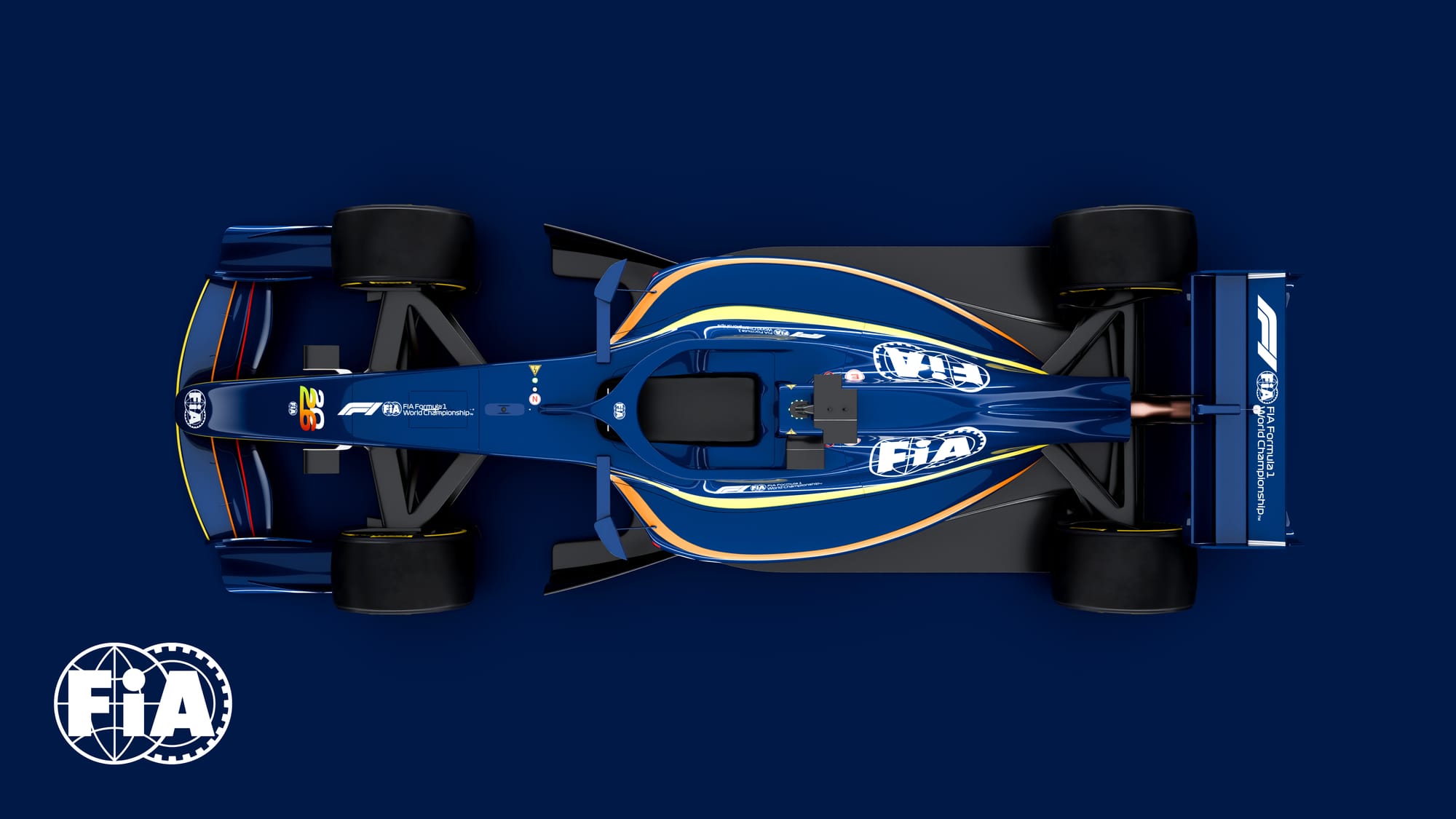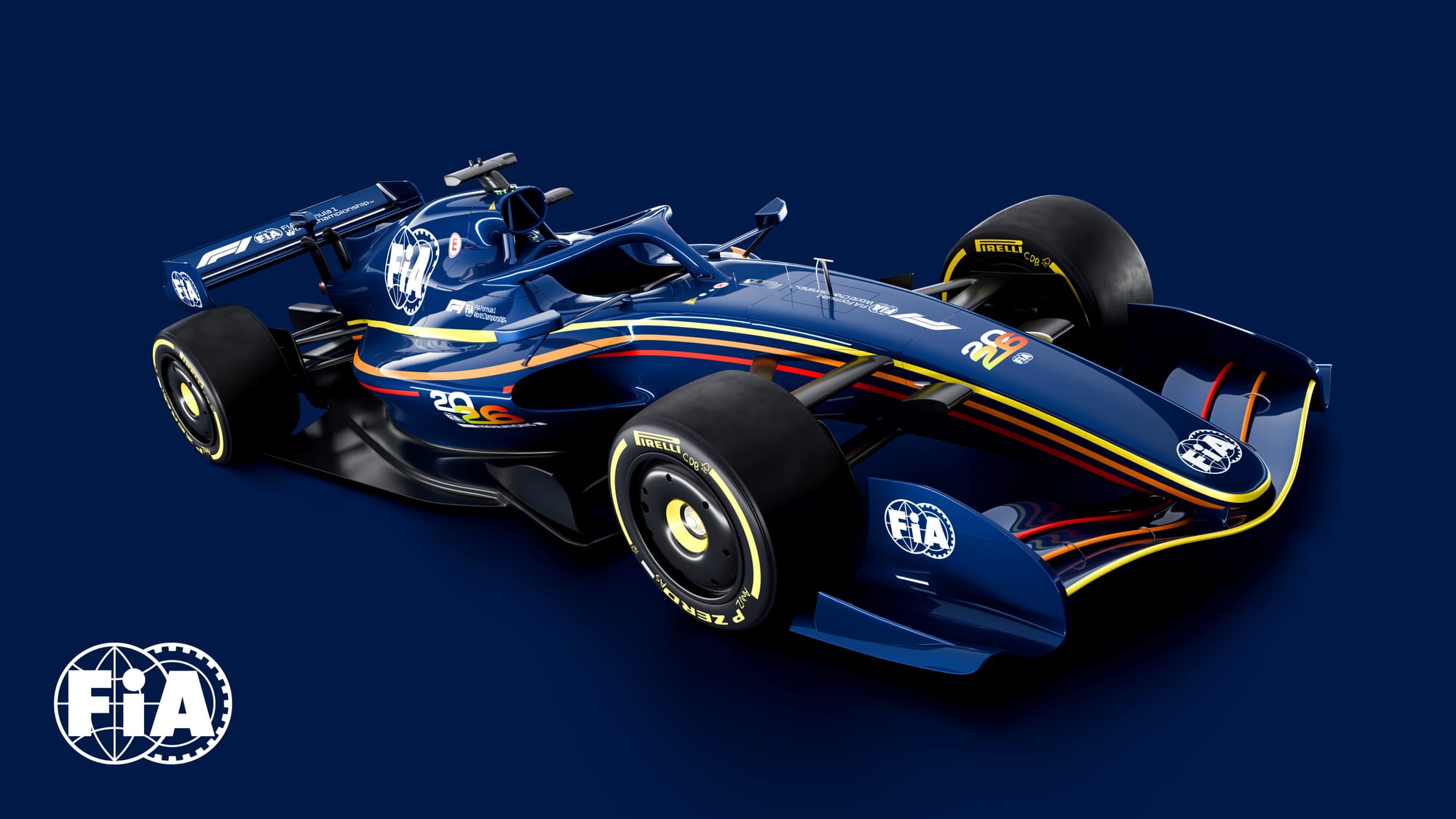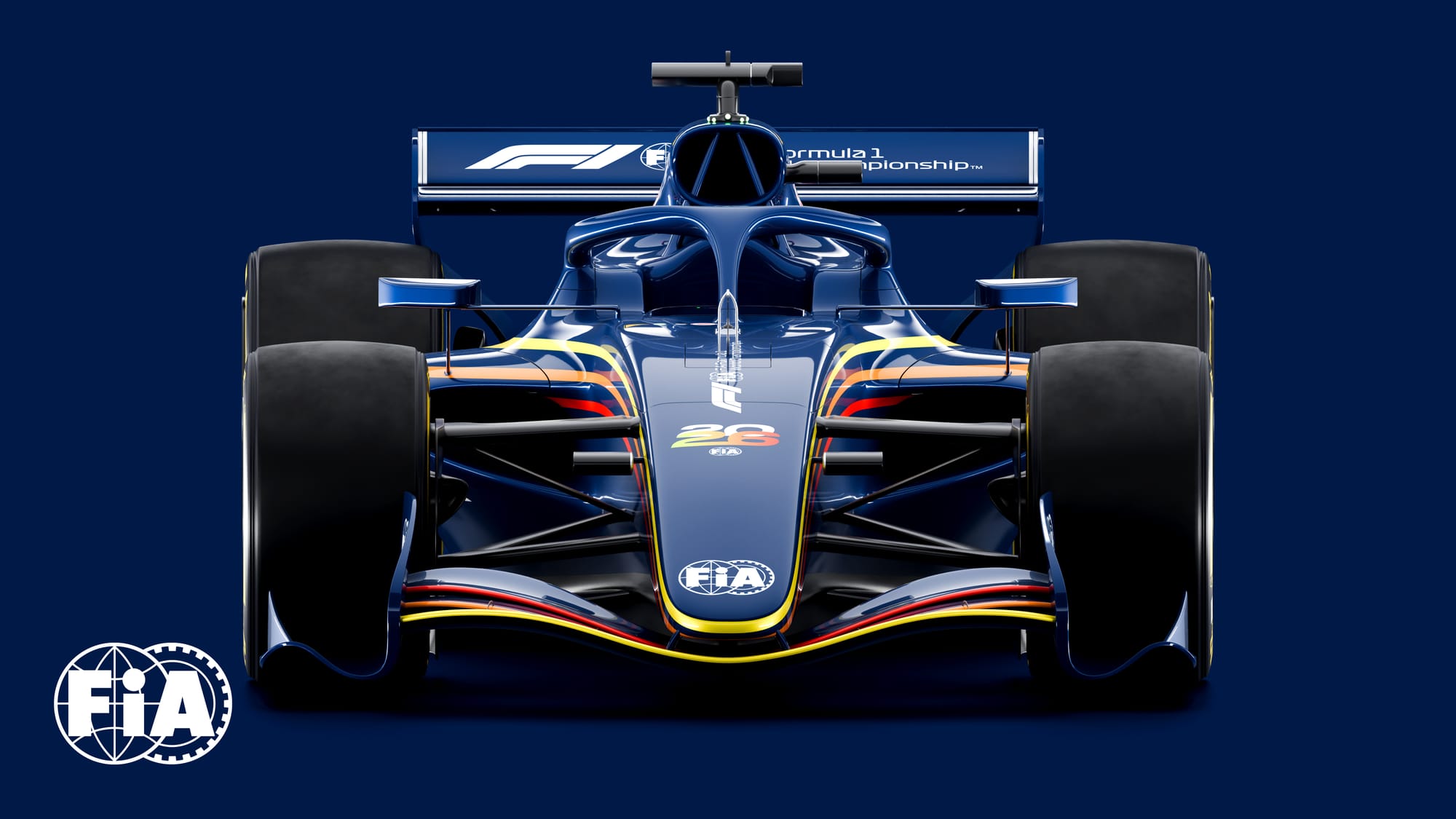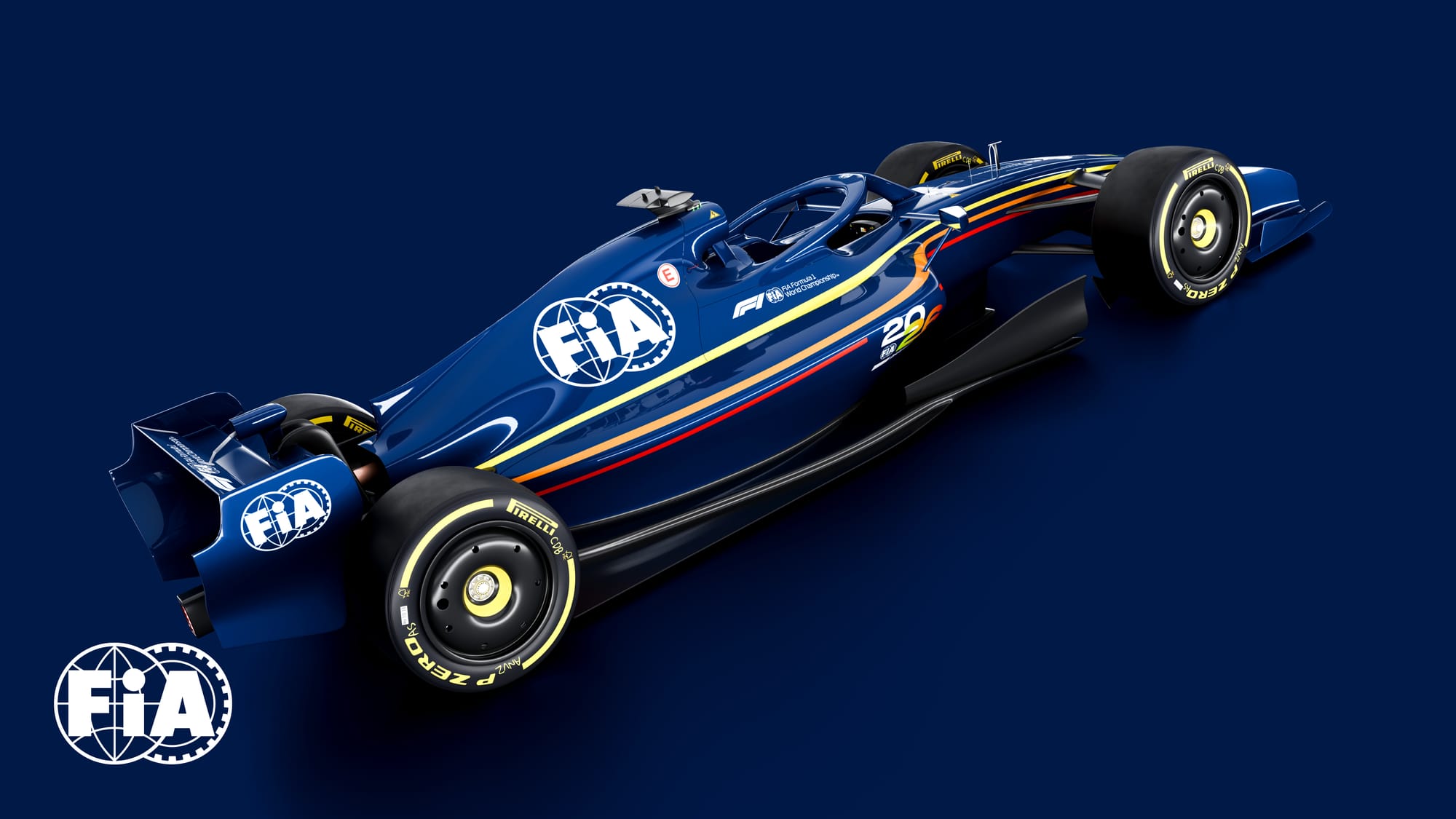Formula 1's divisive 2026 regulations will be changed to address the biggest concerns raised by teams so far, but only after the initial version is approved in the “most restrictive” form.
Concept images and the first batch of detailed information were shared by the FIA this week, based on draft regulations that will be presented to the World Motor Sport Council on Tuesday next week, in what FIA Single-Seater Director Nicholas Tombazis described as “very comprehensive.” ” road”.
The aim is to have it approved by the end of the month, and the primary motivation for releasing what the FIA has now is to ensure the 'full picture' is shared early and not through leaks.
But like all FIA regulations, this was never likely to be the final form as Formula 1's governance sets out a clear process for approving and implementing changes before 2026.
“Most important of all is the global council discussion, and we hope that approval will be the first step,” Tombazis said. “We're not in the final set of regulations yet.
“We have some things that we need to identify and discuss with the teams. We are very aware of some concerns and these are things that we classify as improvements that still need to be implemented.
“For example, between the end of the month, when we hope these regulations will be published, and the beginning of 2025, when the teams can start aerodynamic development, we expect to do a fair amount of additional work in full consultation with the E.U. teams, with the FOM and everyone.
“And we hope that will then lead to some improvements that will be presented to the global council perhaps later in the year and hopefully approved.”
More freedom will be given
As Tombazis noted, the current 2026 plan is so controversial in some areas that some concerns have been raised about how mature the rules were when they were initially approved.
The teams have called for wide-ranging changes over the coming weeks and months to ensure the rules' objectives can actually be met.
The FIA is already aware of the problems teams are having with the draft regulations based on discussions in the Technical Advisory Committee, a group that helps formulate regulatory decisions.
FIA technical director Jan Monschau said the plan was to give the green light to a restricted initial group to meet the approval deadline required by international sporting law – and then open up the regulations as necessary after that, through discussion with teams and others. the owners.
“They have certainly expressed their concerns,” Monshew said.
“Teams are usually always reluctant to make big changes, so [there is a] A bit of constant compromise that has to be constantly found.
“Effectively, our approach is that we need to respect the framework in terms of the date of publication. The regulations as they are presented and hopefully voted on will be the most restrictive the teams will see.”
“We believe that it will be much easier in the coming months to start increasing the freedom and change aspects of regulations that seem very restrictive, rather than the other way around.
“Because they will all agree to more freedom. Conversely, there will be a lot of freedom in their ability to design cars, and then we realize in October or November that we don't necessarily want that because it might risk some goals.”
He added: “This approach makes more sense, as we have a solid basis to start discussions, and review some areas where we provide little or no freedom.”
“Determined” to lose weight

The teams have raised question marks over the feasibility of a 30kg weight reduction, with the minimum mass reduced from the current 798kg to the planned 768kg in 2026.
The FIA is confident that the target is “challenging but possible”, although work is still ongoing with the teams in terms of understanding what weight savings can be achieved.
“We are absolutely determined to reduce the weight of cars,” Tombazis said. “We were working on a set of assumptions based on the work Jan was doing in collaboration with the teams.
“We have a set of areas where we know the weight will go up and we have a set of areas where we know the weight will go down. What we have as a goal depends on the challenge but what we feel is a possible goal.
“Obviously we will continue to ask teams to have some estimates about what weight reduction they can achieve and so on, as we go through that process.
“But we are very determined to reduce weight in a significant way, and this is the first time this has happened I think in Formula 1 since the 1980s or something like that.”
Tombazis also said suggestions about dropping the minimum driver weight are inaccurate.
The regulation introduced in 2019 effectively set the minimum weight for drivers at 80kg with ballast added to the seat if necessary, but this number will now rise by 2kg.
“No, that's not true,” Tombazis said when asked if the minimum driver weight would be dropped. “The debate was whether the permissible weight should be 80kg or 82kg.
“The feeling was that 80kg could punish some of the heavier drivers a little bit and we'll get to 82kg.”
“Low level” of performance

It is inevitable that huge changes will be made to the cars' performance profile with the aim of reducing downforce by 30%, reducing drag by 55%, having slightly narrower tires, overhauling the engine characteristics by reducing the V6 output and almost tripling the power from the V6. MGU-K.
This has led to concerns about how fast cars are on straights and how slower they are on corners, adding to the overall performance deficit compared to now and detracting from Formula 1's status as the pinnacle of motorsport.
Monchu admitted that top speeds would be “a little higher than they are now” but insisted they would be closely monitored, and performance parameters controlled as required, to avoid speeds getting out of control. The goal is for speeds on the straights to be comparable to the current speed, “plus or minus” a few miles per hour.
“We will make sure that maximum speeds do not reach levels that would be a safety concern and we have the means to do that,” Monchow said.
“We can influence the low-drag settings, preventing it on certain straights or reducing the distance you can open [the wings]To control maximum speeds.
“Similarly, when deploying electric power, we have the ability if necessary to realign where we feel is necessary to actually achieve top speeds similar to how they are now.
“We are not interested in ridiculous risks. If we do not take action, the risk will be there, but we are aware of it.”
However, the FIA is somewhat unapologetic about plans to slow cars down for corners. The desire now is to slow them down but make them more “smart” – so they are not as fast, but they change direction better, are not lazy to drive, and can therefore race better.
But Monchu said the FIA was happy to discuss the “appropriate” downforce level once teams matured their designs and simulation work with an initial set of regulations confirmed. This means developing systems, most likely in the floor, to add more downforce to the cars than currently expected.
The performance profile has also raised concerns that laptops will be much slower than they are now, potentially only a few seconds faster than Formula 2. Tombazis described these concerns as “subtle” based on a glance at the draft regulations, but with As things develop, this issue will be “100% resolved.”
“We have full expectations to make strides in performance,” he said. “This is exactly why we set the bar reasonably low to begin with so that we can build collaboratively with the teams.
“Increasing the downforce of these cars is easy if you have regulatory freedom. These are the steps we will take.”
The changes to the tyres, which will be 2.5cm narrower at the front and 3cm at the rear, will result in a slight reduction in grip. The first test will be carried out in September to maximize tire development time.
Active antenna “DRS-like”

One of the major changes in the 2026 regulations is the introduction of active aerodynamics. As announced earlier in the week, drivers will be able to switch between X mode [low drag for straightline speed] And Z mode [higher downforce for corner speed] With both front and rear spoilers activated.
When asked by the race team to explain how this system will be governed and the regulations that will govern it, Monchu said that many details had not yet been finalized based on discussions with the teams.
However, he likened it to current DRS systems and also confirmed that there will be standards to prevent it from being activated while there is a significant lateral load or even any lateral load on the car to ensure it is only used on straight lines.
“All of this is currently still under discussion with the teams,” Monchu said. “So, it's not as if we've fully described all the details of how and when they activate.
“The general line we'll be following is like DRS. So, DRS, you need to tick the box in terms of distance or cycle distance to the car in front of you at a certain point, and then the driver can set off. But it's the driver who pushes the button and deploys the system DRS and he shuts it down too.
“If you think about how DRS works, we think the approach in X mode would be exactly the same. Certain conditions are met, such as very low lateral acceleration or no lateral acceleration, and thus exit the corner effectively. If these conditions are specified , the driver will press a button, it will not be automatic, then the DRS and front wing will open for low-drag take-off [mode]. Then shortly before it reaches the braking zone, it will deactivate it.
“And if not, we'll make sure it's deactivated.” Failure Analysis Approach, or FMEA [failure mode and effects analysis]The regime can and will be subject to the same approach that was followed today with the DRS. And we'll have the same very rigorous approach, making sure that the system, once deployed for the first time during winter testing, will only do what it's supposed to do and not be subject to ongoing reliability issues or worse, safety.
“It is expected that some teams will face some hurdles in the first winter test, but I honestly believe that the experience gained over the years with the DRS system should ideally be transferable on the front end, so the system will not pose a huge challenge for the teams in terms of can we get it to work.” “Can we operate it safely and reliably, because it will be on almost every straight line and that does not worry us too much.”
Power unit regulations can be modified

The 2026 rules were led by the Power Unit Regulations, published in August 2022. But although these will not change significantly, the FIA believes engine manufacturers are open to making adjustments if they are necessary to achieve the wider range target. Rules package.
This was something McLaren boss Andrea Stella saw as needed, saying it was “time for all parties to understand that they need to contribute to the success of this”.
Although the power unit regulations have been ratified and published – now in their sixth edition – meaning there are restrictions in terms of how changes can be voted on, manufacturers will be open to potential changes in the way the rules allow power, Tombazis said. To be managed.
“There is a slightly different position in terms of governance at the energy unit, as we are already subject to a governance agreement in relation to the energy unit's records, which means that any amendments that may be necessary will still need to be agreed with the energy unit,” Tombazis said when asked by The Race about the scope of the amendment. Engine rules if necessary: “This cannot be done unilaterally.”
“But because there is generally a very good cooperation spirit. If some adjustments are needed, I am very confident that PU manufacturers will help and cooperate.”
The goal for the power units is to produce approximately 50/50 in terms of V6 power and electric power, but there are concerns that the way power is created and managed could make it difficult to achieve performance targets.
While the basics of the regulations will not change in terms of structure since manufacturers are already advanced in their development, there is likely room for small changes in the rules governing energy production and management.





